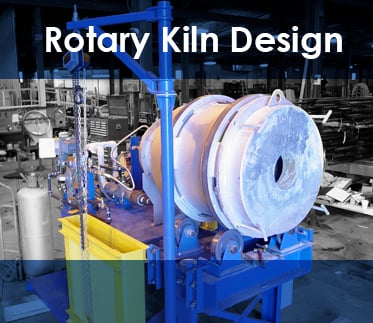Previously, we looked at indirect fired rotary kilns in applications such as reactivating spent carbons, pulling valuable materials out of valueless carriers, and conducting thermal processes in inert environments. Now we will look at indirect fired rotary kilns in the application of processing finely divided solids.
Indirect fired rotary kilns can be beneficial when the material to be processed consists of finely divided solids. In a direct fired rotary kiln, the heat source is hot gas (products of combustion and air) which flows with an inherent velocity. These gases can carry discrete particles through form drag. The degree of entrainment depends on a variety of factors such as gas velocity, gas density, particle density, and shape. Due to entrainment potential, direct fired rotary kilns processing fine materials require the design to be centered around permissible gas velocities as opposed to heat transfer requirements.
Indirect fired rotary kilns do not rely on processed materials being in intimate contact with hot combustion gases. It is common for direct fired rotary kilns to have upward of 100 times the mass or volume of process gas flowing within the vessel as opposed to an indirect unit of the same duty.
Some examples of fine materials commonly processed using indirect fired rotary kilns are Carbon Black, chemical precipitates, filter cakes, and finely ground solids, etc.
All of the previous applications for indirect fired rotary kilns are just some of the many instances in which an indirect rotary kiln can be advantageous.
At Feeco International, we custom design rotary kilns to meet a variety of material problems and applications. For more information on FEECO rotary kilns, contact us today!



